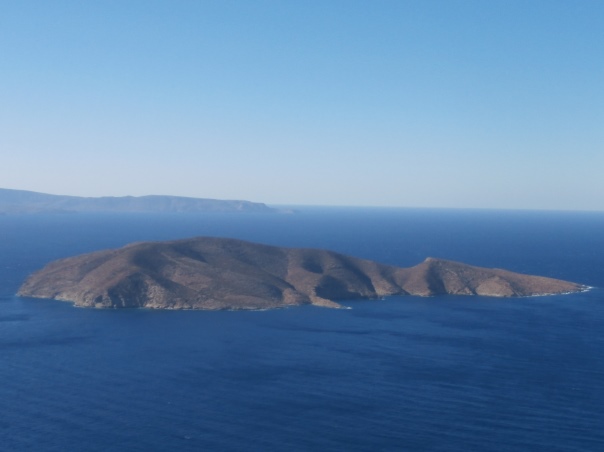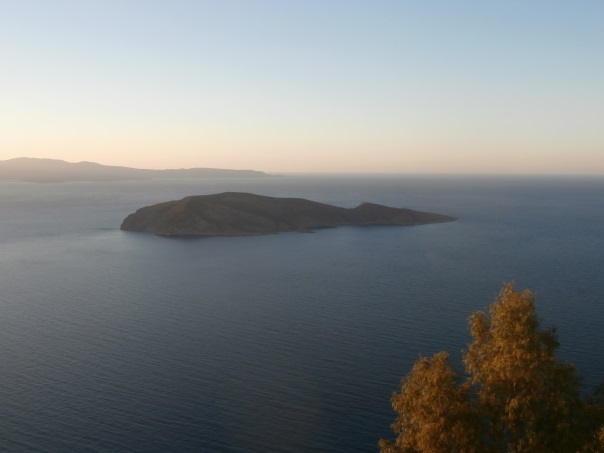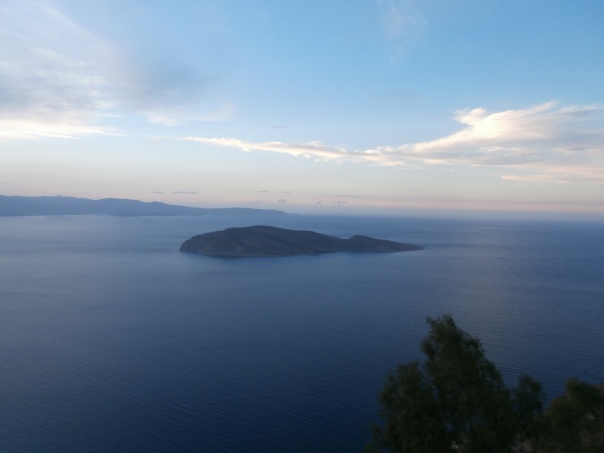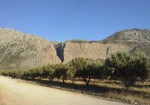Psira or Pseira is an uninhabited and barren islet opposite the beach of Tholos, at the northeastern edge of the Mirambello gulf, in the prefecture of Lasithi.
Its name has in all probability derived from its shape which resembles a louse.
The first excavations at the small islet of Psira were carried out by the American archaeologist Richard Seager in 1906–07 and were continued in 1984–92 by Philip P. Betancourt and Costis Davaras, for Temple University.
A Minoan settlement of 15-20 acres that flourished between 1700BC-1450BC was found on the south coast of Psira.
A seal-stone representing a ship, indicates that the city was important as a Minoan hub-harbour, inhabited by families of merchants, craftsmen, fishermen, farmers and sailors who were all wealthy and probably engaged in the trade of the purple dye.
The prosperous town was ranged round its open square (plateia) and consisted of about 60 houses, different in size with most of them having a fireplace.
A Late Minoan I building that occupies the northern side of the plateia featured a fresco of two bear breasted women in Minoan dress facing each other, in the style of the ones found in Knossos.
Excavations in the necropolis from different periods have shown that the island although twice destroyed, once due to an earthquake and after that by the volcanic eruption οη Santorini in 1450 BC, it was rebuilt and inhabited again in the Roman period.
Burials from the necropolis included clay vases, stone vessels, obsidian, bronze objects, jewellery and a jar decorated with heads of cattle and olive branches.
The excavations by the Αmerican Archaeological School are continuing.
You can visit Psira by boat from Mochlos or Agios Nikolaos.







